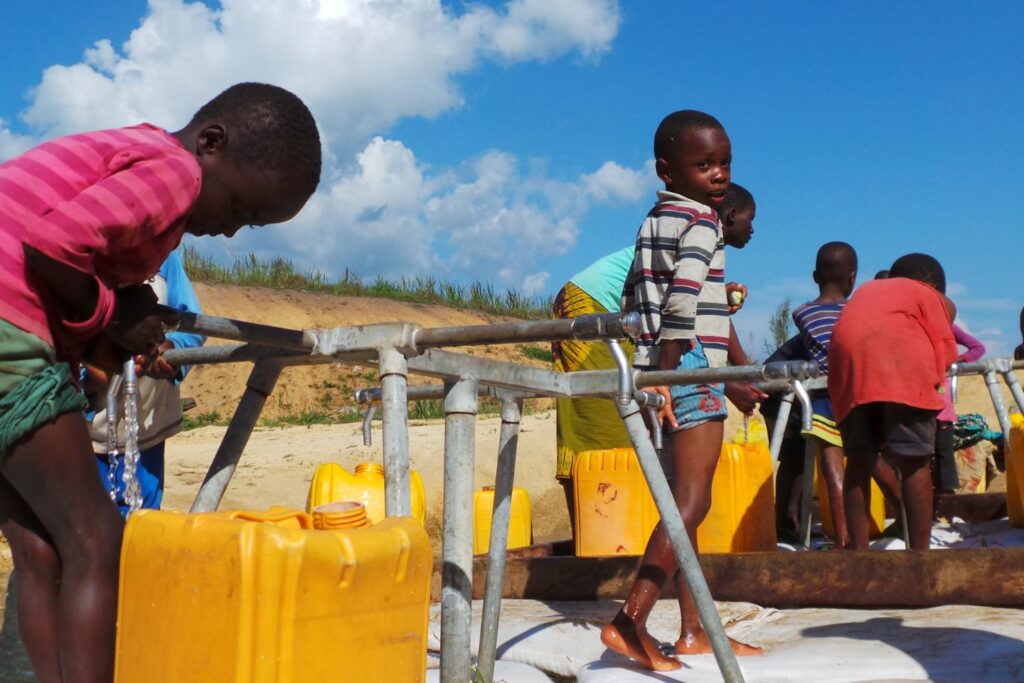Five fundamental business actions to improve Water Resilience – UN Global Compact

|
Listen to this story:
|
Only 15 per cent of the Sustainable Development Goals (SDGs) are on track for 2030. According to the United Nations, global efforts would need to quadruple to meet the water and sanitation targets set for 2030 through SDG 6.
It’s estimated there will be a 40 per cent gap between available water and demand for water by 2030. Gross Domestic Product (GDP) may be reduced by up to six per cent in some regions by 2050 as a result of water risks.
The private sector must take ambitious action to ensure a safe and equitable future for all. Forward Faster guides companies on how and where they can make the biggest, fastest impact before 2030 across five key areas: Gender Equality, Climate Action, Living Wage, Water Resilience and Finance & Investment.
An essential aspect of Forward Faster’s mission is to achieve collective positive water impact in a minimum of 100 vulnerable water basins by the year 2030. Forward Faster has set a target of achieving collective positive water impact in at least 100 vulnerable water basins by 2030. Read on for five fundamental steps from the Moving Water Resilience Forward Faster action guide that can help companies conserve our most precious resource.
- Implementing water-related standards. Companies should familiarize themselves with industry regulations and global standards for water usage and conservation. By adhering to these guidelines, businesses can minimize their environmental impact, curtail waste and ensure compliance with the Alliance for Water Stewardship (AWS) International Water Stewardship Standard.
- Integrating science into target-setting practices. Between 2023 and 2024, new guidance will be released by the Science-Based Targets Network (SBTN) on science-based target-setting for fresh water. It is critical that companies stay updated on these advancements, evaluating their water targets accordingly. Though some additional time may be needed to implement these new standards, the use of science-specific data is vital to setting achievable goals.
- Implementing best practices in water efficiency and wastewater management. Efficient wastewater management is a cornerstone of water resilience. Companies should adhere to best practices in water efficiency and optimize their business operations to decrease water consumption. Wastewater management is equally important and companies should ensure their wastewater is treated and processed safely and sustainably.
- Implementing proven technologies for water reuse, recycling and circularity. Companies can play a pivotal role in driving innovation by adopting new, proven technologies for water reuse, recycling and circularity. These approaches can reduce strain on ecosystems and economies, while preventing unnecessary business expenditures.
- Ensuring safe, resilient access to water, sanitation and hygiene (WASH). Businesses should provide safe and resilient access to WASH for their employees and throughout supply chains. By doing so, companies support a healthy and productive workforce and contribute to the broader Global Goal of providing access to clean and sanitary water for all.
Related Article: OceanWell and LVMWD Announce Partnership to Pilot California’s First Blue Water Farm
Incorporating these five actions into your business operations is about forward thinking, doing and leading. Join Forward Faster and your business will help bring us closer to achieving our Global Goals and set new and needed precedents for innovation and technology.
History has taught us that the leaders who succeed are the ones who meet the needs of the future by moving forward. Let’s move #ForwardFaster.










